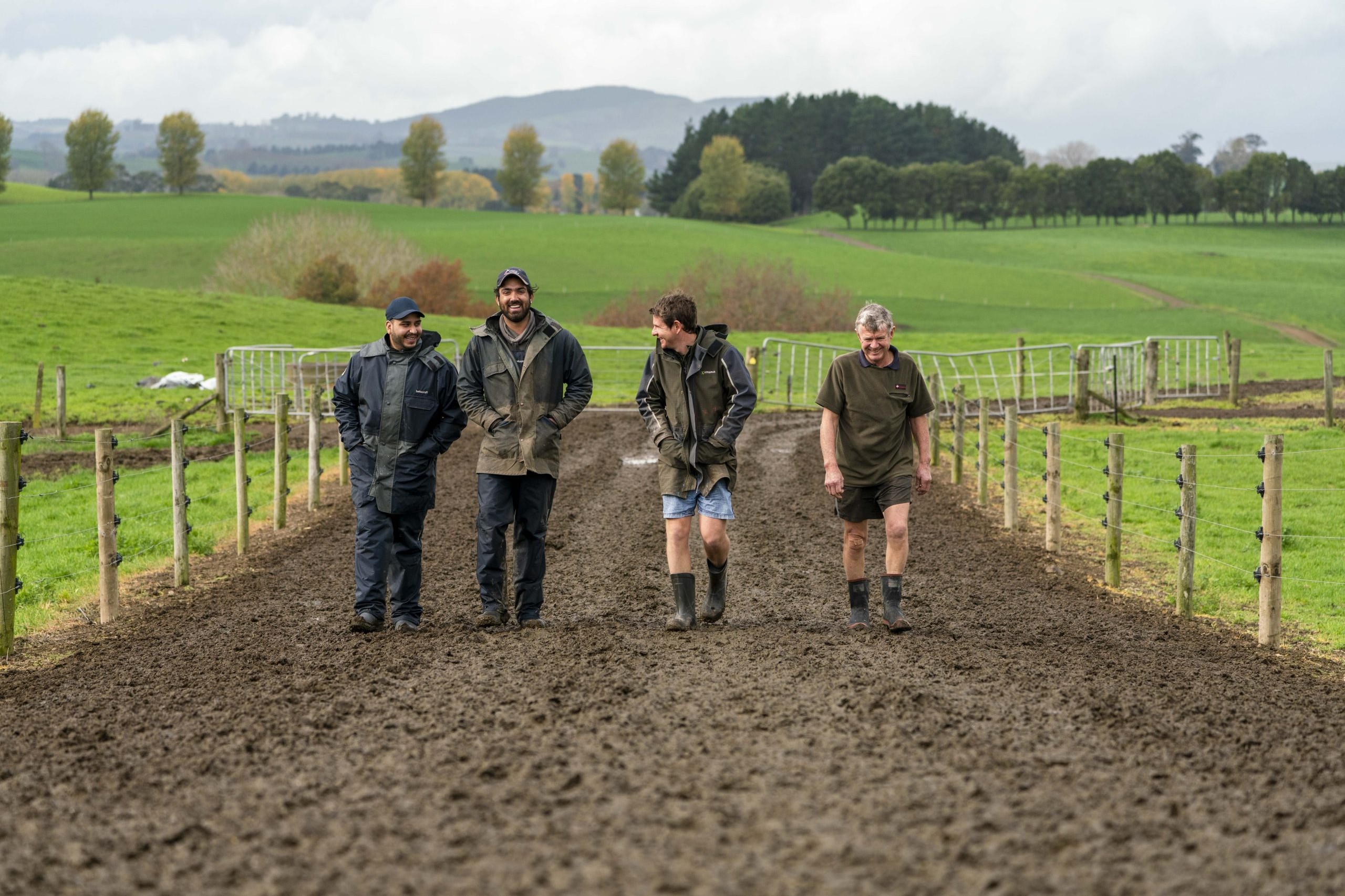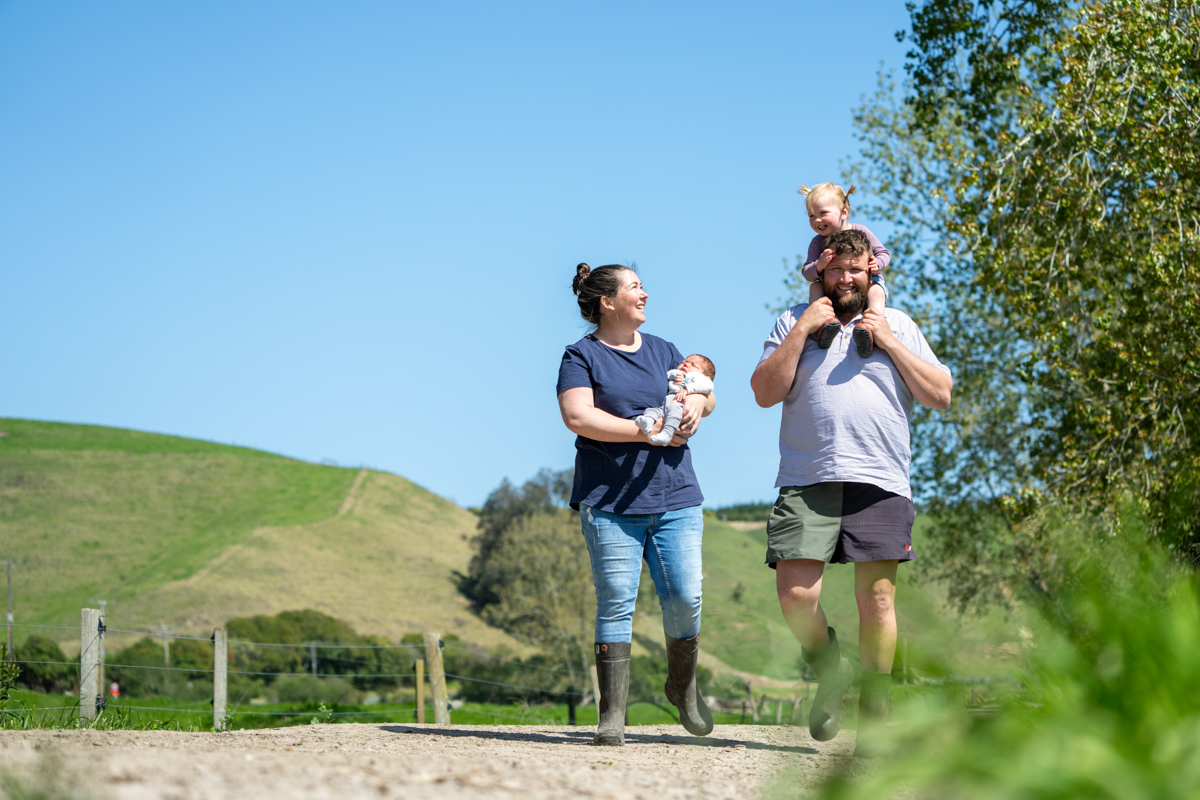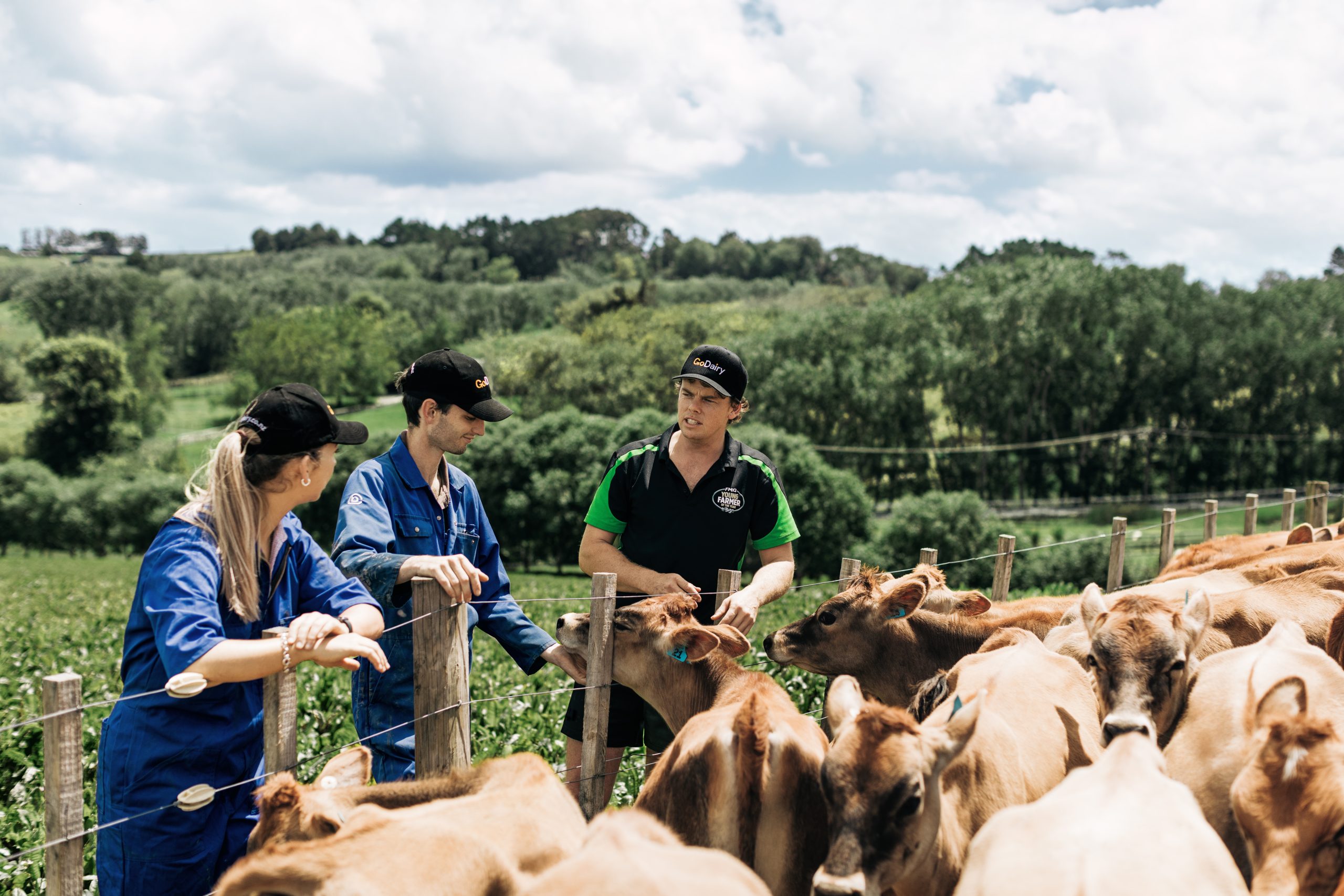A young Golden Bay dairy farm manager hasn’t let novice staff or her own dyslexia stand in her way. Anne Hardie reports.
Lydia Freeman was just 20 when she took on the manager’s role for a 300-cow herd with the added challenge of novice staff and dyslexia, but she’s not someone to be fazed about being thrown in the deep end.
Getting cow numbers mixed up and round the wrong way just means she has to double check things and Lydia has never let dyslexia hold her back, saying there is always a solution. It’s an attitude that has got her to Primary ITO level 5 and a speedy climb up the career ladder.
The youngest of four growing up on the family dairy farm in Golden Bay, Lydia was one of those kids who couldn’t wait to get home from school to feed the calves and wash the yard down after milking. By the time she was a teenager she was relief milking, sometimes in the shed before school to milk the cows. She got paid, but money wasn’t the attraction; it was the cows and simply getting out on the farm.
So it was no surprise when she finished her schooling and took on a farm assistant job on a Golden Bay dairy farm where she rounded out her skills for a couple of years. Both years she entered the Dairy Industry Awards Dairy Trainee of the Year for the West Coast-Top of the South and was named most promising trainee the first year and then runner up the second year.
It was a great job, but when a manager’s job came up near Tapawera, it was too good an opportunity to turn down.
“They probably took a huge gamble employing me because it was a huge step – managing 300 cows and responsible for a staff member and part timer over calving and mating. And the staff member was totally new to dairying and young, so I was pretty much having to teach them everything about dairying. It was such a huge learning curve.
“But I’m probably more of a practical person and seem to work better by being thrown into something and learning about it – you soon learn if you haven’t done it right.”
It was a two-year contract, timed for her to head back to the family farm to take over the management role when the contract milker moved on. That was last season and today the 23-year-old is managing a 400-cow herd on the 150-hectare (including some leased) family farm at Puramahoi in Golden Bay with a target of 160,000kg milksolids (MS). Last season she milked 450 cows on the farm, but they’ve dropped cow numbers to find a better balance with feed and that has resulted in higher production per cow so far this season.
She usually has one full-time staff member, a man in his 50s who could have found it hard working for the boss’s 22-year-old daughter, but Lydia says their working relationship has worked well. But farming always throws the odd curve ball and when he broke his shoulder, she faced calving this year with two part-timers, including one who was new to dairying.
Her parents give her free rein to manage the farm, with her father, John, in charge of the two support blocks and her mother, Anne, rearing the calves. The family has 160ha in support land where they rear the young stock, graze bulls, winter the herd and grow hay, balage and maize for supplements. It enables the business to be completely self-contained without any bought-in feed whatsoever and as Lydia says: “Why buy in feed when you have it here?”.
The cows winter on grass and balage, though it does cost $40 per cow to truck them over the Takaka Hill to one of the support blocks and back again to start a new season. It’s cheaper than grazing them away and for the past six years they have employed a local hay contractor to look after the cows for the two months they winter on the property.
Back on the milking platform, two of the biggest challenges are giant buttercup and pakihi soil that has poor fertility and poor drainage, causing it to pug easily. During wet weather – and they get 2.5 metres of rain a year – she picks paddocks that are harder than others and they become part of the regrassing programme, with an extra 2kg of balage fed to the cows while they are on the sacrifice paddocks in wet, cold weather, to allow for wastage.
“We have a feedpad and if it is really bad weather I’ll put them on there. But I don’t like to put them on concrete for too long. Though we do put them on the feedpad in March to May to feed them maize and put weight on before going into winter. Maize is not good for production but it’s good for weight and we feed them up to 4kg.”
The giant buttercup drives the regrassing programme and it’s an ongoing battle to control the pest which takes out an estimated 40% of pasture production. Cows don’t like grazing too close to the plant and though they regrass paddocks and constantly spray, it’s a hard weed to keep down and left unchecked will quickly take over a paddock.
‘I’m probably more of a practical person and seem to work better by being thrown into something and learning about it – you soon learn if you haven’t done it right.’
In the past they have sprayed with Preside, but it hasn’t been killing the plants effectively and this year they have switched to Harmony. Ongoing spraying means they have to tread carefully with their choice of spray and how they use it to avoid resistance. Physically spraying the paddocks takes a bit of planning, as sprays can knock grass, slows down clover and needs 14 days before the cows are allowed to graze them again.
“You can get rid of it but it’s not gone forever and there’s a lot of time and money to keep on top of it. We’ve got 10 paddocks (30ha) sprayed this year plus the ones going into chicory and you have to work that into your round. Ideally we would like to spray more paddocks. We do mow a bit as well, but that controls the buttercup rather than getting rid of it.”
Each year 12ha of the worst buttercup paddocks are sprayed out and sown in chicory and usually about half of those are irrigated with effluent, which is the only form of irrigation on the farm. Despite the good rainfall, the farm still dries out and that’s why they sow chicory.
Though it prefers irrigation – enabling six grazings off the paddocks irrigated with effluent – it still grows well enough for four grazings without irrigation on the farm.
While buttercup is an ongoing challenge, Lydia’s main focus this season has been reducing milk fever at calving and getting the somatic cell count down. Last season the herd had 25 cows with milk fever and this year it was down to six. Every season is different with factors such as weather which means no two seasons are truly comparable and they came through a drier spring with less time for the cows on the sacrifice paddocks. But she also attributes the reduction to drenching the older cows with JumpStart and adding more minerals to the cows’ diet.
“We’ve been really big on minerals this year and attention to detail, particularly picking up signs earlier and having a more preventative approach. So we’ve had MCM (Essential Nutrition MCM Calving) in troughs, making sure there’s not a feed imbalance and making sure it’s consistent. Any older cows showing signs of calving were given a drench before they calved.
“We also used bolus (calcium) down the throat and if we were standing-off cows for a wet night, we drafted off any cows that looked like they were close to calving.”
Another change has been fertiliser and for the past seven years John has been using a biological fertiliser recommended by agronomist Neal Kinsey which he believes has improved animal health and clover production.
Another preventative measure was adding the magnesium oxide on to the hay just before it was fed to the cows, rather than on grass, to make sure the cows got the minerals into them. It went into the troughs as well to really boost magnesium intake. For those six cows that did go down with milk fever, Lydia says a dose of Calpro in the vein and magnesium under the skin had them on their feet within 20 minutes.
Meanwhile, work on reducing the somatic cell count in the herd has successfully brought it down to around 100,000 cells per millilitre of milk which is a 20% drop on last year.
“We really tried to work on that this year because it was higher than we liked. We culled some of the higher somatic cell cows but I think we are also more on to it and we always strip out the colostrum cows for four days before going into the vat. And we always milk the high somatic cell cows last so they don’t spread to the rest of the herd and their milk gets fed to the calves.”
A good spring also helped mating and in the first week of artificial insemination (AI) Lydia had 133 cows cycling. To get cows ready for mating, Lydia puts any cows under stress around calving on to once-a-day milking (OAD), but keeps them with the main herd.
“From the day they calve, if they are looking under the weather, poor health and under condition score of 4, they went on to once-a-day but stayed with the main herd, coming in twice a day but only getting milked in the morning. And we found these cows really benefited from this, really bouncing back from calving, with a shiny coat and putting on weight faster, giving them a better chance of cycling faster after calving.”
It resulted in a herd of 120 cows being milked OAD and at the start of mating she separated the cows into two herds for four weeks over AI which included any of the cows still struggling for condition, plus a few non cycling cows that had calved longer than 30 days beforehand. Once the cows have cycled and got over a condition score of 4.5, they went back on twice-a-day milking, with all cows returned to the main herd after the four weeks of AI.
A good spring helped mating and in the first week of AI Lydia had 133 cows cycling. In the four weeks of AI the herd usually produces 120 replacement heifers and then Jersey bulls are put with the remainder of the herd. The bulls are bred on the farm, with the two-year-old bulls going over heifers and the three-year-olds over the rest of the herd and Lydia says they use Jersey bulls because they are simply easier on the cows with their smaller calves.
They used the Queen of Calves nutrition programme for the calves and Lydia says it worked well, with calves looking really good for an early weaning 10 days earlier than usual at 80kg and then weaned from meal at 100kg. She says they seemed to transition better to grass at weaning and they will be using the programme again next year.
In the new year she may be saying goodbye to the family farm and heading to Canterbury because a wedding is planned for January and the couple’s future may be based in Geraldine. That means she will be looking for a manager’s job on a Canterbury dairy farm and no doubt she will take it in her stride.





